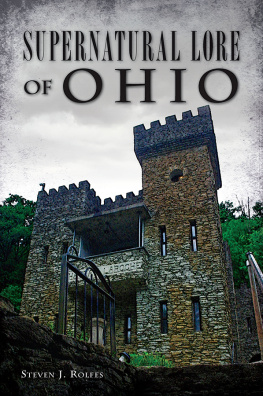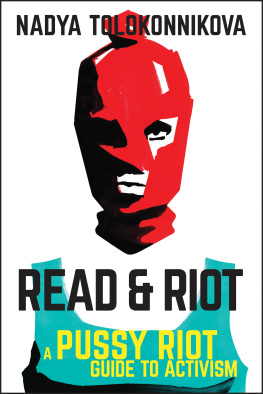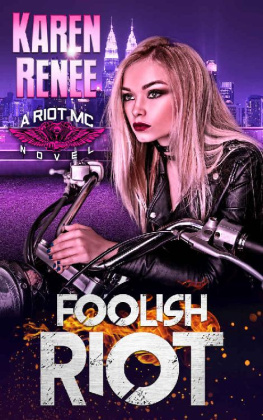PELICAN PUBLISHING COMPANY
Gretna 2016
Copyright 2016
By Steven J. Rolfes
All rights reserved
The word Pelican and the depiction of a pelican are
trademarks of Pelican Publishing Company, Inc., and are
registered in the U.S. Patent and Trademark Office
Library of Congress Cataloging-in-Publication Data
Names: Rolfes, Steven J.
Title: The Cincinnati courthouse riot / by Steven J. Rolfes.
Description: Gretna : Pelican Publishing Company, 2016. | Includes
bibliographical references and index.
Identifiers: LCCN 2015050298| ISBN 9781455621873 (paperback : alkaline paper)
| ISBN 9781455621880 (e-book)
Subjects: LCSH: Cincinnati (Ohio)History19th century. |
RiotsOhioCincinnatiHistory19th century. |
FiresOhioCincinnatiHistory19th century. |
CourthousesOhioCincinnati History19th century. | Political
corruptionOhioCincinnatiHistory19th century. | Trials
(Murder)OhioCincinnatiHistory19th century. | Cincinnati
(Ohio)Politics and government19th century. | Cincinnati (Ohio)Social
conditions19th century.
Classification: LCC F499.C557 R65 2016 | DDC 977.1/7803--dc23 LC record available at http://lccn.loc.gov/2015050298
Printed in the United States of America
Published by Pelican Publishing Company, Inc.
1000 Burmaster Street, Gretna, Louisiana 70053
To William Kirk, the Taylor family, Capt. John Desmond, and all of the people who lost their lives in the Cincinnati Courthouse Riot
Contents
Acknowledgments 9
Introduction 11
Chapter 1: Cincinnati and the Gilded Age 19
Chapter 2: Dress Rehearsal for a Riot 27
Chapter 3: The Curious World of Cincinnati Politics 41
Chapter 4: Murder Most Foul 57
Chapter 5: A Dragon Rises from the Ohio 71
Chapter 6: Murder Most FoulAgain! 79
Chapter 7: The Trial and the Verdict 87
Chapter 8: Escape and a Meeting at Music Hall 109
Chapter 9: The First Night 119
Chapter 10: The Second Night 135
Chapter 11: The Third Night 155
Chapter 12: Lessons Unlearned 175
Notes 201
Index 204
Introduction
In memory of
John J. Desmond
An Attorney at Law
Captain Co. B 1st Gen. ONG
Who was Killed Near this Spot
While defending the Court House
From Lawless violence
This Tablet is erected
By members of the bar.
More than a thousand people walk by this plaque each work day, but no one stops to read it. Few even notice that it is there. It is inconspicuous, hidden away near the front doors of the new Hamilton County Courthouse. Everyone is too busy removing their keys and watches in order to pass through the metal detectors.
After overcoming the obstacle of security screening, no one can fail to see the massive statue dedicated to this same Capt. John Desmond; but once again, everyone walks by it, simply assuming that this is honoring some soldier for his service in the Civil War. Anyone coming to the courthouse has other things on their mind. What happened in the past has nothing to do with the problems that they are facing today.
That is where they are wrong.
The 1884 Cincinnati Courthouse Riot was one of the most horrific episodes of civil disturbance in the nations history. At its height, it involved thousands of people waging open warfare on the downtown streets of one of the largest cities in the United States. Both sides in this struggle had artillery. By sheer numbers, the power of the mob was overwhelming. After three days of bloody fighting, the militia and the police prevailed only through the sheer might of state-of-the-art military technology: the Gatling gun.
To say that the 1884 Courthouse Riot was the result of a corrupt verdict in a murder trial is rather like saying that World War I was the result of the assassination of an archduke. The verdict, like the assassination, was merely the trigger, the flash point. Like the horrors of the war, the destruction wrought by the riot was incomprehensible, far beyond anything that could be imagined at the time.
Since 1884, society has made great strides in this arena. We have studied riots. We know their structure and how they affect human behavior and the best ways to prevent and, if necessary, control them without the use of automatic weapons. We also know that civil violence can topple nations, especially if the leadership of those regimes is corrupt and unresponsive to the needs of the people. History has given us many sobering examples of this. Thirty-three years after the Hamilton County Courthouse burned to the ground, the last tsar of the Romanov dynasty was overthrown by riots, and the following year the noble royal family was slaughtered in cold blood. A few years after this revolution in Russia, the streets of postwar Berlin became a war zone. In more recent times, repressive regimes in Soviet Eastern Europe and a number of Middle Eastern nations such as Egypt all fell due to rioting.
History has taught us another hard lesson about riots: such disorder is almost invariably followed by dictatorship under a charismatic autocrat. Napoleon ascended to bring order and stability to France after the chaos and confusion of the French Revolution. Lenin, through bloodshed, brought peace to Russia, as did Hitler in response to Germanys Weimar Republic. Khomeini created a repressive militaristic state in Iran. The list goes on.
What about in Cincinnati? The corruption of the political machine of T. C. Campbell and his Democratic rival John Roll McLean was replaced by the rule of a single powerful dictator, George Boss Cox. The greatest danger in a riot is always what comes after the violence has ended.
The moment that the Courthouse Riot ended, people realized how foolish the whole affair had been. Mistake followed mistake. The Music Hall meeting was a mistake, and it was a mistake that the law and order element did not see the danger and prevent the demonstration that became a disaster, the Cincinnati Commercial Gazette reported.
But these were not the real mistakes; they were only tactical errors. The true error was that the people of Hamilton County had tolerated corruption in their midst for so long. The hard lesson is that freedom comes at a very high price, one not only paid by soldiers in foxholes but also by every person in every class of society. Democracy requires that the people being governed carefully watch what their chosen representatives are doing. One must be educated and participant for a democracy to truly work. Freedom requires constant vigilance. All that corruption needs is for the citizens to go about their daily lives simply assuming that the people they put into office will always have their best interests at heart.










